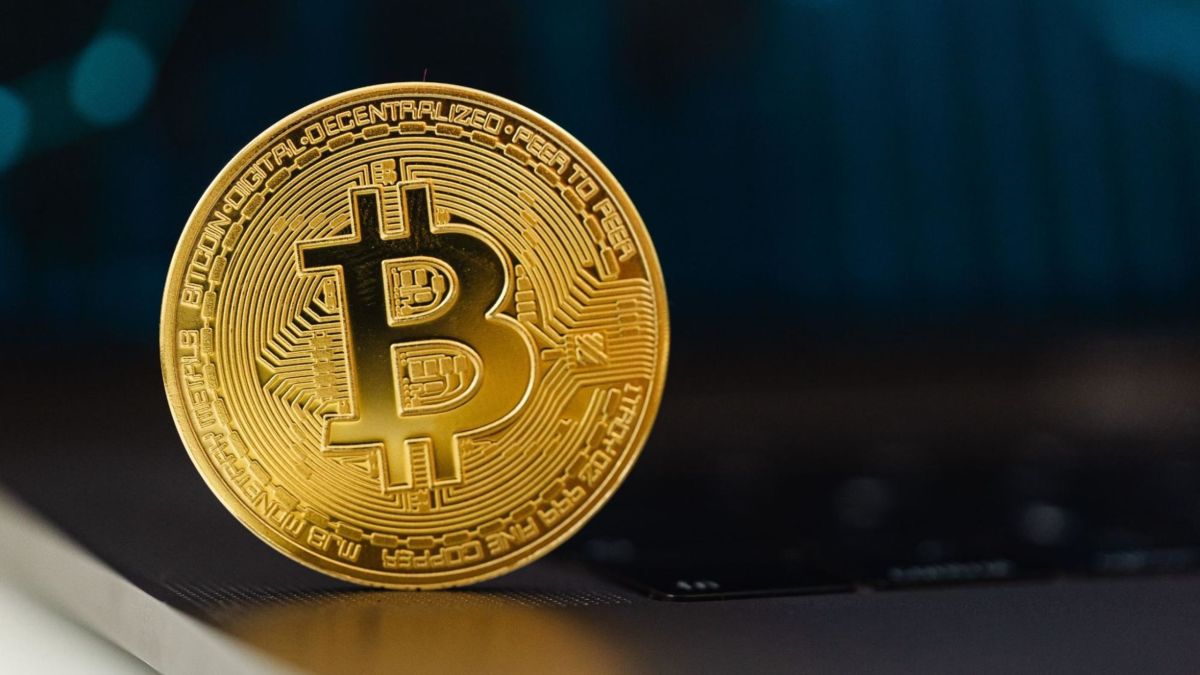What Are Stablecoins?
Stablecoins are a type of cryptocurrency that aims to maintain a stable value by being pegged to a reserve asset. This reserve asset is often a fiat currency, such as the U.S. dollar. It can also be commodities like gold or other cryptocurrencies.
The primary purpose of stablecoins is to provide the benefits of digital currencies. Those would be fast and low-cost transactions, without the extreme price fluctuations commonly associated with cryptocurrencies like Bitcoin or Ethereum.
Why Stablecoins Matter
In the crypto world, stability is a rare commodity. Most cryptocurrencies are known for their price volatility, which can be both a blessing and a curse. While price swings offer opportunities for significant gains, they also pose substantial risks.
This volatility can make it difficult for individuals and businesses to use cryptocurrencies for everyday transactions or long-term planning. Stablecoins solve this problem by providing a value that is more consistent, which makes them more useful for a range of applications.
Stablecoins are crucial for:
- Everyday Transactions: People can use stablecoins to buy goods and services without worrying about sudden price changes.
- Remittances: Stablecoins enable low-cost international money transfers, bypassing traditional banking systems.
- Crypto Trading: Traders often use stablecoins as a safe haven during market volatility, allowing them to lock in profits without converting back to fiat currency.
- Decentralized Finance (DeFi): Stablecoins are a cornerstone of the DeFi ecosystem, enabling lending, borrowing, and earning interest without relying on traditional banks.
Types of Stablecoins
We can categorize stablecoins into three main types based on the underlying asset that backs them. Each type offers different levels of stability, transparency, and risk.
Type | Description | Examples |
Fiat-Backed | These stablecoins are backed by a reserve of fiat currency, usually held in a bank account. Each stablecoin is typically equivalent to one unit of the fiat currency. | Tether (USDT), USD Coin (USDC) |
Crypto-Backed | Backed by other cryptocurrencies. These stablecoins are often over-collateralized to account for the volatility of the underlying assets. | DAI, sUSD |
Algorithmic | These stablecoins use algorithms to control supply and demand, maintaining their value without physical or digital collateral. | Ampleforth (AMPL), TerraUSD |
Fiat-Backed Stablecoins: The Digital Dollar
Fiat-backed stablecoins are the most common and widely used type of stablecoin. They are typically pegged to the U.S. dollar, earning them the nickname “digital dollar.”
Each fiat-backed stablecoin is backed by reserves of the corresponding fiat currency held in a bank account. This backing ensures that the value of the stablecoin remains closely tied to the value of the fiat currency, providing stability.
For example, Tether (USDT) and USD Coin (USDC) are two of the most popular fiat-backed stablecoins. When you hold one USDT or USDC, you can be confident that it is worth approximately one U.S. dollar.
Crypto-Backed Stablecoins: A Different Approach to Stability
Unlike fiat-backed stablecoins, crypto-backed stablecoins are backed by other cryptocurrencies. This might sound counterintuitive, given the volatility of most cryptocurrencies.
However, these stablecoins achieve stability through over-collateralization. This means that for every stablecoin issued, there is more value held in reserve in the form of a cryptocurrency.
For example, the DAI stablecoin, issued by the MakerDAO platform, is backed by Ethereum and other cryptocurrencies. To issue 100 DAI, you might need to lock up $150 worth of Ethereum. This over-collateralization ensures that even if the value of the collateral drops, the stablecoin remains stable. This also means that crypto-backed stablecoins can be more complex and riskier than their fiat-backed counterparts.
Algorithmic Stablecoins: Stability Through Code
Algorithmic stablecoins take a completely different approach. They are not backed by any physical or digital assets. Instead, they rely on algorithms and smart contracts to maintain their value. These algorithms adjust the supply of the stablecoin in response to changes in demand.
For instance, if the price of an algorithmic stablecoin rises above its target value, the algorithm will increase the supply by issuing more coins, which should lower the price.
Conversely, if the price falls below the target, the supply will be reduced, pushing the price back up. While this approach is innovative, it also comes with significant risks. If the algorithm fails or if there is a sudden loss of confidence in the stablecoin, its value can quickly collapse.
The Role of Stablecoins in Crypto Stability
Stablecoins play a crucial role in improving crypto stability. They provide a stable store of value within the volatile cryptocurrency market. They act as a bridge between the traditional financial system and the world of digital currencies, offering a familiar, stable asset.
Stablecoins enable more complex financial activities within the crypto ecosystem. Like lending, borrowing, and earning interest through decentralized finance (DeFi) platforms. Without stablecoins, these activities would be much riskier due to the volatility of other cryptocurrencies.
The Rise of Stablecoin Regulation
As stablecoins have grown in popularity, they have attracted the attention of regulators worldwide. Stablecoin regulation is becoming a hot topic as governments and financial institutions seek to ensure that these digital assets are used safely and transparently.
One of the main concerns for regulators is the potential impact of stablecoins on the broader financial system. Given that stablecoins are frequently linked to fiat currencies, there is a risk that large-scale adoption could affect monetary policy and financial stability.
To address these concerns, regulators are exploring various approaches, from requiring stablecoin issuers to hold reserves in licensed financial institutions to implementing strict disclosure and reporting requirements.
Another key area of focus is consumer protection. Regulators want to ensure that they adequately protect stablecoin holders in case of a failure or collapse of the stablecoin issuer. This includes ensuring that stablecoin reserves are audited and that there are clear mechanisms for redeeming stablecoins for fiat currency.
Potential Benefits of Stablecoin Regulation
While regulation might seem like a burden, it could bring several benefits to the stablecoin market and the broader crypto ecosystem:
- Increased Trust: Regulation can help build trust in stablecoins by ensuring that issuers are transparent and that their reserves are properly managed.
- Consumer Protection: Clear rules and safeguards can protect users from fraud and other risks associated with stablecoins.
- Integration with Traditional Finance: Regulation could make it easier for stablecoins to be used in traditional financial transactions, such as payments and remittances.
- Reduced Risk of Systemic Issues: By ensuring that stablecoins are backed by sufficient reserves and that their operations are transparent, regulators can help prevent issues that could destabilize the broader financial system.
Challenges and Risks of Stablecoin Regulation
However, regulating stablecoins also presents several challenges and risks:
- Overregulation: Too much regulation could stifle innovation and limit the growth of stablecoins, reducing their benefits.
- Global Coordination: Stablecoins are used worldwide, making it difficult to implement consistent regulations across different jurisdictions.
- Privacy Concerns: Some regulations might require stablecoin issuers to collect and share user data, raising concerns about privacy and surveillance.
- Technical Complexity: Regulating algorithmic stablecoins, in particular, could be challenging due to their complex and innovative nature.
The Future of Stablecoins
Stablecoins have already become a vital part of cryptocurrency, and their importance is likely to grow in the coming years. As the crypto market matures and more people and businesses adopt digital currencies, the demand for stable, reliable assets will continue to increase.
In the future, we might see new types of stablecoins, backed by a wider range of assets or using more sophisticated algorithms. We could also see stablecoins playing a more significant role in the global financial system, potentially serving as a bridge between traditional fiat currencies and the digital currencies of the future.
At the same time, stablecoin regulation will likely evolve as governments and financial institutions adapt to the challenges and opportunities posed by these digital assets. Striking the right balance between innovation and stability will be key to ensuring that stablecoins can continue to thrive while protecting consumers and the broader financial system.
Stablecoins offer a unique blend of stability and flexibility in the world of cryptocurrency, making them an essential tool for both users and investors. By providing a stable store of value, they enable a wide range of activities within the crypto ecosystem, from everyday transactions to complex financial services.
However, as stablecoins grow in popularity, the need for clear and effective regulation will become increasingly important. By understanding the different types of stablecoins, their role in crypto stability, and the potential impact of regulation, we can better appreciate their significance in the evolving digital economy.

















 English (US) ·
English (US) ·